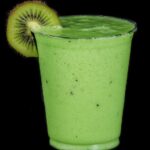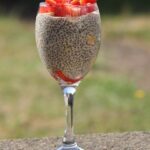Is Juicing Better Than Smoothies? Let’s Find Out
Have you ever wondered is juicing better than smoothies? Which is the better choice for your health—juicing or smoothies? Both have surged in popularity as convenient ways to boost nutrition. But each offers unique advantages and drawbacks. As we have a look at this, we aim to help you make informed dietary choices.
In this article, we will first explore juicing. We will highlight how it extracts pure liquid from fruits and vegetables. Next, we’ll dive into the world of smoothies. Smoothies blend whole ingredients for a different texture and nutritional profile.
We will then provide a nutritional comparison between the two. We will examine vitamins, minerals, and fibers. After that, we’ll discuss the health benefits and concerns associated with each. Finally, we’ll weigh the practical considerations to determine which option might be better suited for your lifestyle. Get ready for an enlightening journey to find your perfect health drink!
Juicing vs. Smoothies: A Nutritional Showdown
Is Juicing Better Than Smoothies?

Understanding Juicing
Juicing is the art of extracting the liquid essence from fruits and vegetables. Juicing creates a refreshing beverage that is rich in nutrients. By using a juicer, whether a centrifugal juicer, masticating juicer, or a cold press juicer, you can turn a variety of raw produce into a vibrant juice.
The Juicing Process
The journey of juicing begins with selecting your favorite fruits and vegetables. Popular choices include:
Once the produce is chosen, the juicing process involves washing, peeling (if necessary), and then feeding the items into the juicer. The machine separates juice from the pulp, providing a clear and concentrated drink. For instance, a high-quality cold press juicer like the Omega NC900HDC can help you extract every drop of juice while preserving the vitamins and enzymes that may diminish with heat.
Nutritional Profile of Juices
Juices are a concentrated source of vitamins and minerals, which can vary based on the ingredients used. For instance, a glass of freshly squeezed orange juice is well-known for its high vitamin C content, while a green juice featuring kale may be rich in iron and calcium. However, one significant difference between juice and whole fruits/vegetables lies in fiber content. Juicing often removes the fiber, which plays an essential role in digestive health.
Despite the fiber loss, juicing can be a great way to increase your intake of specific nutrients. When you drink juice, it allows for quick absorption of vitamins because your body doesn’t have to break down the fiber. This can be particularly beneficial if you’re feeling under the weather or need an immediate nutritional boost. As an example, a juice blend of beetroot and ginger might help increase circulation and aid recovery post-exercise.
Types of Juicers
When it comes to choosing your equipment, juicers come in various types:
Understanding juicing allows you to explore the myriad of health benefits, while also posing questions about what you’re giving up in terms of fiber and fullness. As we continue our exploration, we’ll uncover the deliciously satisfying world of smoothies, which offer a different approach to nutrition.
Exploring Smoothies
Smoothies offer a delicious and versatile way to incorporate a wide array of nutrients into your daily diet. Unlike juicing, which extracts liquid from fruits and vegetables, smoothies blend whole ingredients together, maximizing their nutrient content and providing a creamy, satisfying texture.
The Smoothie Making Process
Creating a smoothie is simple and can be as quick as tossing ingredients into a blender. The basic components often include:
Nutritional Benefits of Smoothies
Smoothies allow you to enjoy whole fruits and vegetables fully, preserving their fiber content, which is vital for digestive health. High in fiber, a typical smoothie can help you feel full longer, making it an excellent option for meals or snacks. This is especially beneficial for weight management and maintaining energy levels throughout the day.
Moreover, smoothies can cater to a variety of dietary needs. For instance, adding spinach to a berry smoothie not only boosts its iron and vitamin C levels but also adds a nutritional punch without altering the taste. Smoothies can be tailored for a post-workout recovery, breakfast on the go, or a midday pick-me-up, making them a highly adaptable choice.
Creative Ingredient Combinations
The beauty of smoothies lies in their endless flexibility. Here are a few combinations to inspire your next blend:
A Nutritional Powerhouse
In addition to being tasty, smoothies can be fortified with various supplements. For example, adding a scoop of collagen powder can be beneficial for skin and joint health, while spirulina adds a significant source of protein and vitamins.
Smoothies can easily accommodate your dietary preferences or restrictions, making them a great option for anyone looking to enhance their nutrition without sacrificing flavor. As we transition into our next section, we will evaluate the nutritional comparison between juices and smoothies, revealing how they stack up against each other in terms of vitamins, minerals, and fiber.
Nutritional Comparison: Juices vs. Smoothies
When it comes to making the most out of our fruits and vegetables, both juicing and smoothies hold their ground, but they do so in different ways. Understanding their nutritional content helps you choose the right option for your health goals.
Fiber Content
One of the most significant differences between juices and smoothies lies in their fiber content. Juicing effectively extracts the liquid from fruits and vegetables, leaving behind the pulp that contains most of the fiber. As a result, a glass of juice may provide a concentrated source of vitamins and minerals but lacks the bulk that fiber offers.
Smoothies, on the other hand, use whole fruits and vegetables, allowing you to retain their fiber content. This fiber is integral for digestive health, aiding in regularity, and slowing down the absorption of sugars into the bloodstream, which can lead to more stable energy levels.
For instance, a smoothie made with whole bananas and spinach not only delivers vitamins A and C but also adds dietary fiber, which can help curb hunger and promote satiety. In contrast, a juice made from those same ingredients would provide a quick surge of sugars without the balancing effect of fiber.
Vitamins and Minerals
Both juices and smoothies can offer a rich array of vitamins and minerals, but the way these nutrients are delivered to your body differs. Juices are often lauded for their high concentration of specific nutrients—think vitamin C from oranges or essential antioxidants from beetroot. This concentration can make juices ideal for a quick health boost when you’re under the weather or looking for a simple energy lift.
Smoothies, however, provide a more balanced nutritional profile. By including whole fruits and vegetables, you can achieve a broader spectrum of nutrients. For example, a green smoothie with kale, kiwi, and avocado will offer vitamins K, C, and E, as well as healthy fats, which can help with nutrient absorption.
Impact on Satiety and Digestion
The effects of juices and smoothies on satiety also differ significantly. Because smoothies include fiber and whole produce, they help you feel fuller for longer, making them an excellent choice for a meal replacement or a filling snack. The texture and bulk of a smoothie can satisfy hunger and prevent you from reaching for less nutritious options shortly after consumption.
On the flip side, juices can lead to quicker digestion because they are essentially just sugar and water. Without fiber, your body can rapidly absorb the nutrients, which may lead to a quick energy spike, followed by a crash. This could leave you feeling hungry again soon after enjoying a juice.
Absorption and Nutritional Delivery
Something to consider is how your body processes these two options. The quick liquid form of juices allows for immediate absorption of nutrients, which can be beneficial when you’re seeking a fast health boost. However, the fiber in smoothies slows down digestion, making it ideal for prolonged nourishment throughout the day.
Quick Nutritional Summary
In light of these differences, the choice between juicing and smoothies will often depend on individual health needs and lifestyle goals. As we progress into the next section, we’ll explore the health benefits and potential concerns associated with both methods, offering a clearer picture of how each option fits into an overall healthy lifestyle.
Health Benefits and Concerns
When it comes to juicing and smoothies, each option offers unique health benefits while posing certain concerns that warrant consideration. In this section, we’ll delve into the advantages and drawbacks of both, providing you with a well-rounded view of these trendy nutritional practices.
Juicing: Benefits and Concerns
Benefits
- Detoxification: Juicing is often touted for its detoxifying properties. Consuming fresh juices can flood your system with vitamins and nutrients that may help eliminate toxins. For example, incorporating beet juice has been linked to improved liver function.
- Quick Nutritional Boost: Juices allow for immediate absorption of nutrients since they are devoid of fiber. This makes them ideal when you need a rapid energy boost, such as before or after a workout. The hydration from juices can also be invigorating, especially in hot weather or when you’re feeling under the weather.
- Variety of Produce: Juicing can encourage the intake of a wide range of fruits and vegetables that you might not typically consume whole. For instance, when blending a green juice with kale, cucumber, and ginger, you can easily incorporate nutrients from these powerhouse ingredients without having to chew through them.
Concerns
Smoothies: Benefits and Concerns
Benefits
- Fiber-Rich: One of the hallmarks of smoothies is their fiber content, which aids in digestion and can contribute to a feeling of fullness. This makes smoothies an excellent choice for meal replacements or sustained energy throughout the day.
- Customization: Smoothies are incredibly versatile. You can tailor your smoothie to fit your nutritional needs by adding ingredients like protein powder, nut butters, or superfoods such as spirulina or chia seeds. This customization allows you to experiment and find what works best for your health goals.
- Satiating Effect: Thanks to the presence of whole fruits and vegetables along with potential add-ins, smoothies can stave off hunger longer than juices. The thick texture and rich taste make them delightful and filling, supporting weight management by potentially reducing snacking throughout the day.
Concerns
A Balanced Perspective
In navigating the complex relationship between juicing and smoothies, it’s essential to consider both benefits and concerns. While juices offer a concentrated source of nutrients ideal for quick energy, smoothies present a thorough approach to wellness through fiber-rich, filling options. Knowing your personal health goals, dietary preferences, and lifestyle will help you choose which method works best for you.
Next, we’ll explore practical considerations that can help you decide how to incorporate these delicious options into your nutrition routine, allowing you to enjoy the benefits of both without feeling overwhelmed.
Practical Considerations: Which is Better for You?
When choosing between juicing and smoothies, practical aspects such as convenience, cost, and personal dietary goals play a crucial role. This section aims to help you evaluate which option might be better suited to your lifestyle by examining these factors in detail.
Convenience Factor
Juicing:
Smoothies:
Bottom Line: If you’re often short on time, smoothies may fit more seamlessly into your routine.
Cost Considerations
Juicing:
Smoothies:
Bottom Line: If budget is a primary concern, smoothies may be the more economical choice.
Dietary Goals and Nutrition
Juicing for Quick Nutrients:
Smoothies for Sustained Energy:
Personal Taste and Preference
Ultimately, flavor preferences should not be ignored. Some people prefer the smooth, creamy texture of smoothies, while others enjoy the refreshing liquid nature of juices. Exploring recipes within both categories can help you find your favorites without being locked into one method.
Final Thoughts
Your choice between juicing and smoothies will hinge on a blend of convenience, cost, dietary goals, and personal preferences. By weighing these practical considerations, you can take a significant step toward incorporating one or both options into your daily nutrition routine.
As we transition into the conclusion, you’ll be equipped with a clearer perspective to make informed choices about these vibrant and healthful additions to your diet.
Making the Right Choice for Your Health
In summary, both juicing and smoothies offer unique benefits and drawbacks that cater to different health goals. Juicing allows for higher concentrations of vitamins and minerals, while smoothies provide a balanced source of fiber and longer-lasting energy. Understanding these distinctions is essential for making an informed choice.
Ultimately, the decision between juicing and smoothies should align with your individual nutritional needs and lifestyle preferences. Consider experimenting with both to see which best supports your health journey. Whichever path you choose, incorporating fruits and vegetables into your diet is key to enhancing your overall wellness. Your journey to better health can start with a simple glass in hand!




